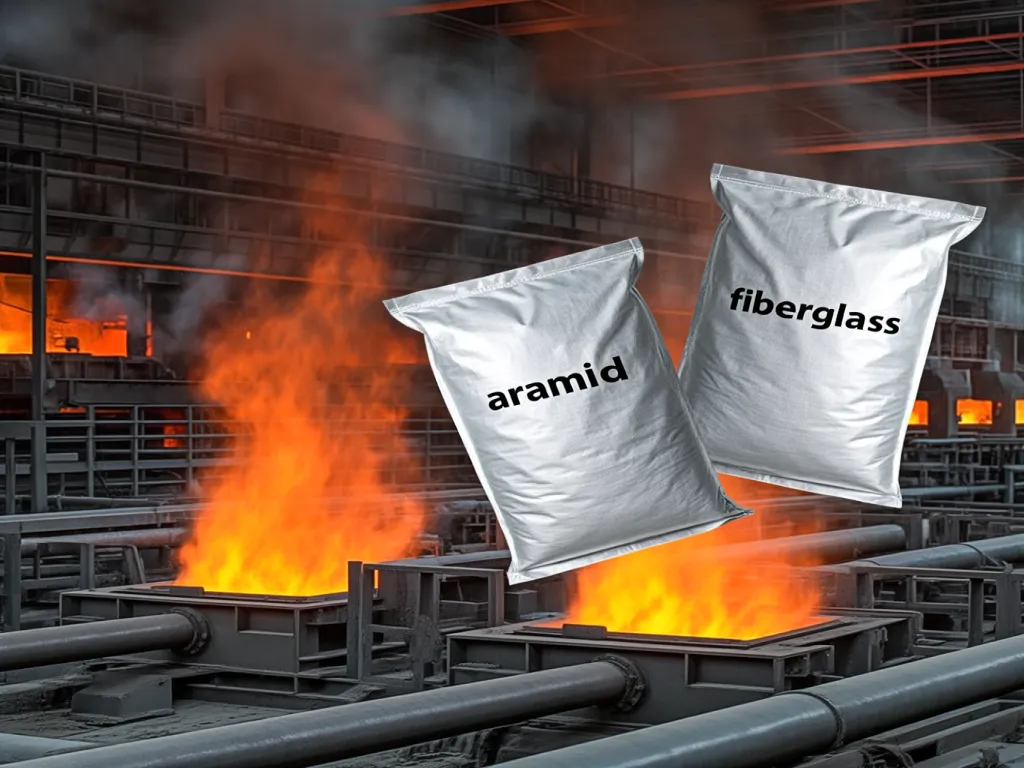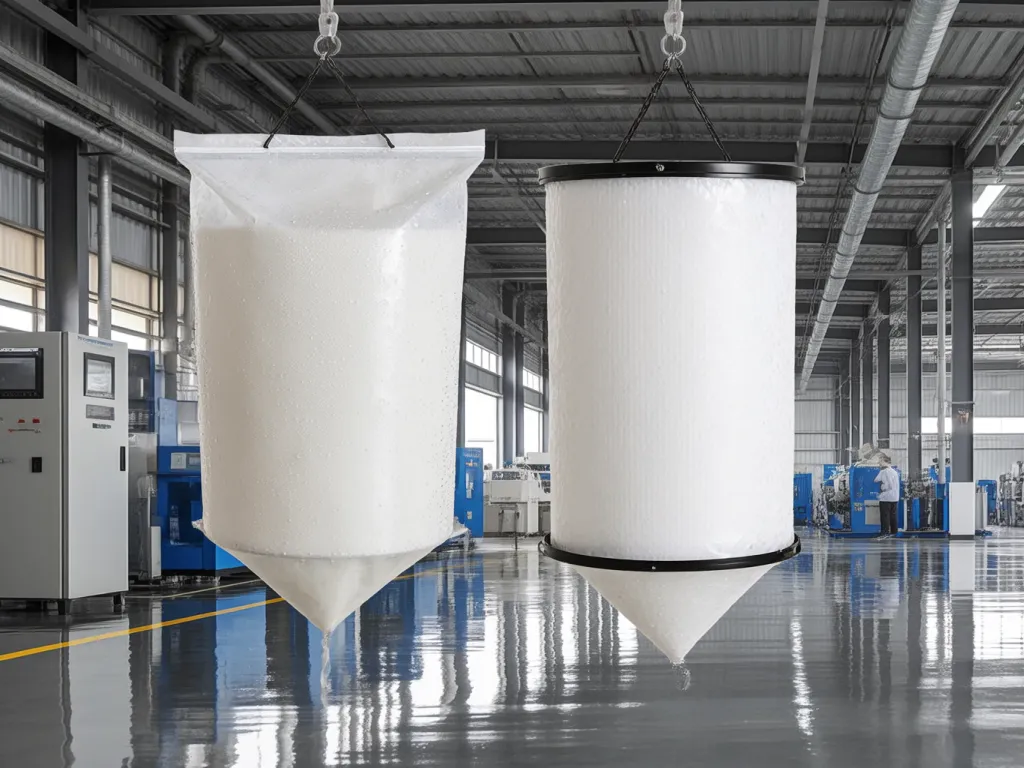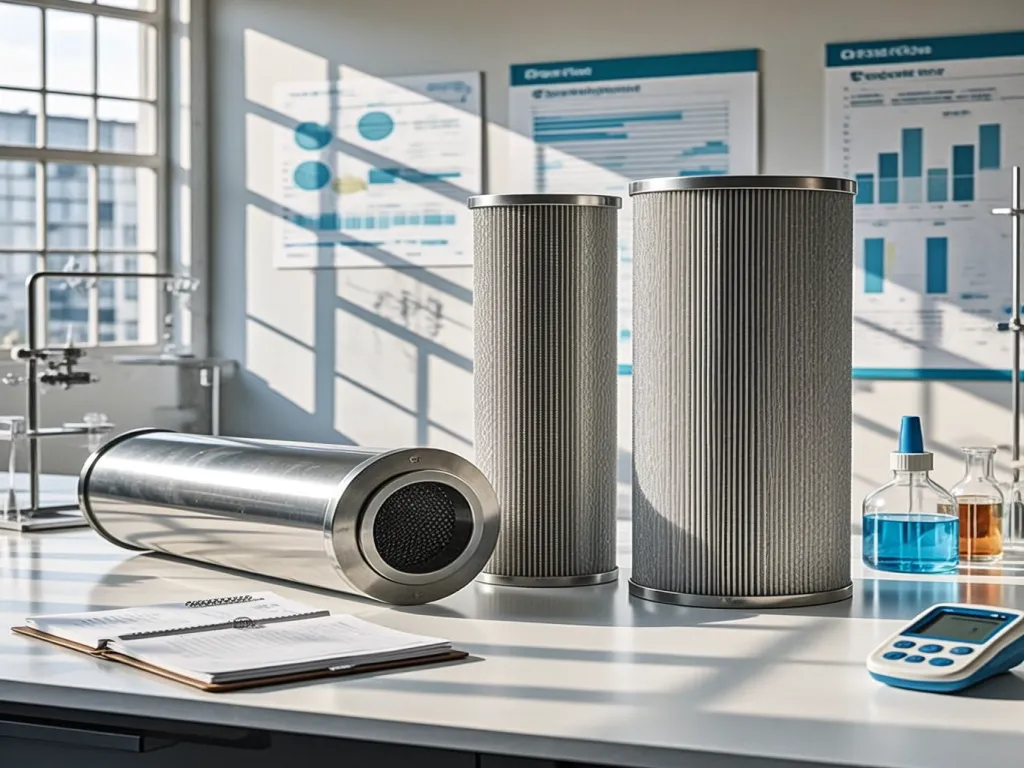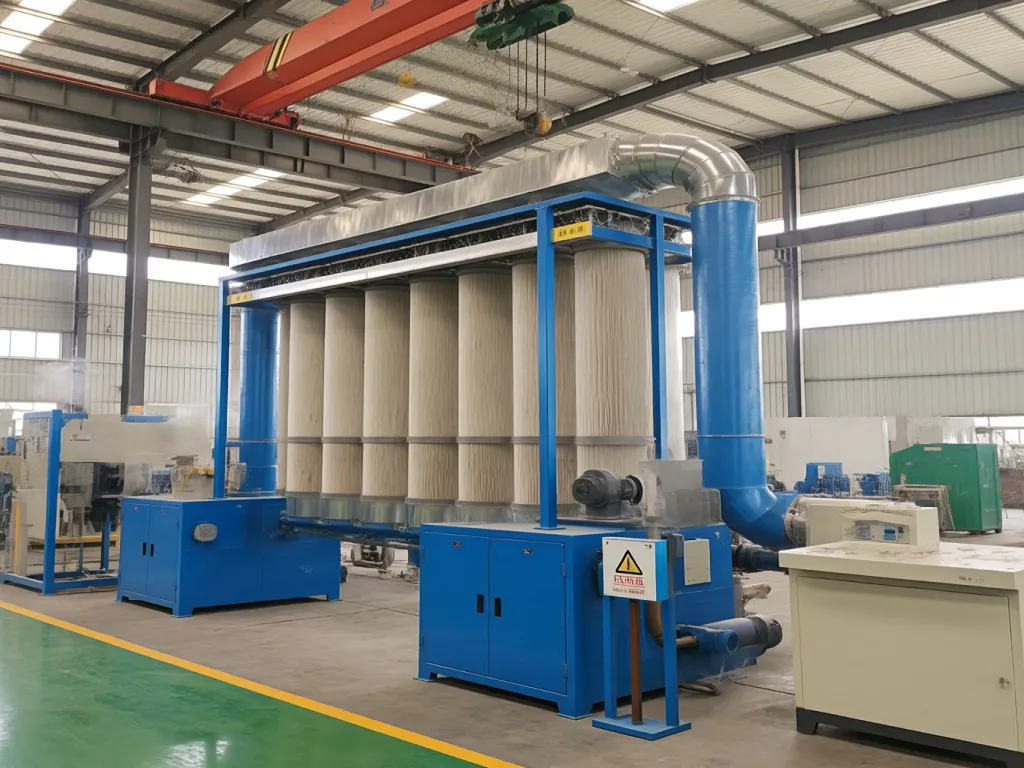Perfect Match: Dust Collector Filter Bag for Extreme Conditions
In industrial settings, the right dust collector filter bag can mean the difference between seamless operations and costly downtime. Whether you’re grappling with blistering heat, relentless humidity, or corrosive chemicals, selecting the ideal filter bag is no small feat. But how do you ensure your choice withstands the toughest environments? This blog dives deep into the art of matching filter bags to extreme industrial conditions, using real-world examples and data-driven insights. Ready to transform your filtration strategy?

High-Temperature Environment Adaptation Strategies: Analyzing the Heat Resistance Limits, Thermal Stability, and Anti-Shrinkage Properties of High-Temperature Filter Bag Materials (e.g., Aramid, Fiberglass), with Case Studies on Preventing Hardening or Breakage
When it comes to industrial filtration in high-temperature environments, selecting the right dust collector filter bag is not just a matter of preference—it’s a necessity. Imagine your production line grinding to a halt because your filter bags can’t withstand the scorching temperatures, leading to costly downtime and potential safety hazards. Sounds like a nightmare, right? Well, it’s a reality for many facilities that overlook the critical role of material selection in high-temperature applications. So, how do you ensure your filter bags stay strong and efficient when the heat is on? Let’s dive into the world of high-temperature-resistant materials like aramid and fiberglass, and uncover their secrets to thriving in extreme conditions.
First up, aramid fibers. These synthetic powerhouses are renowned for their exceptional heat resistance, with some variants capable of withstanding continuous temperatures up to 200°C (392°F) and short-term exposure to even higher temperatures. But what makes aramid so special? It’s all in the molecular structure. Aramid fibers have a rigid, linear polymer chain that resists thermal degradation, maintaining their strength and flexibility even under intense heat. This thermal stability translates to longer filter bag life and consistent performance, reducing the need for frequent replacements. For those seeking reliable aramid-based solutions, consider exploring wholesale Nomex aramid dust filter bags from trusted suppliers.
Now, let’s talk about fiberglass. Often overlooked in favor of newer materials, fiberglass remains a stalwart in high-temperature filtration due to its impressive heat resistance and cost-effectiveness. Fiberglass filter bags can typically handle temperatures up to 260°C (500°F), making them ideal for applications like cement kilns, incinerators, and metal smelting. The secret to fiberglass’s resilience lies in its inorganic composition, which doesn’t burn or degrade at high temperatures. Plus, fiberglass bags are less prone to thermal shrinkage, a common issue that can lead to bag failure in lesser materials. If you’re in the market for durable fiberglass options, check out wholesale fiberglass filter bags from reputable manufacturers.
But heat resistance isn’t the only factor to consider. Thermal stability and anti-shrinkage properties are equally crucial. Thermal stability refers to a material’s ability to maintain its physical and chemical properties over time, even when exposed to fluctuating temperatures. This is vital in industries where process temperatures can vary significantly, causing materials to expand and contract repeatedly. Anti-shrinkage properties, on the other hand, prevent the filter bag from contracting under heat, which can lead to gaps in the filtration system and reduced efficiency.
So, how do these materials perform in real-world scenarios? Let’s look at a case study from a steel manufacturing plant. Faced with frequent filter bag failures due to high temperatures, the plant switched from a standard polyester material to aramid filter bags. The result? A dramatic reduction in bag replacements, from once every three months to once a year. The aramid bags not only withstood the extreme heat but also maintained their shape and filtration efficiency, proving that investing in the right material pays off in the long run.
Another example comes from a power generation facility using fiberglass filter bags in their boiler exhaust system. Despite the continuous high temperatures, the fiberglass bags showed minimal signs of wear after a year of operation, outperforming their polyester counterparts by a wide margin. The plant reported improved air quality, reduced maintenance costs, and enhanced operational reliability.
But selecting the right material is just half the battle. Proper installation and maintenance are equally important to prevent issues like bag hardening or breakage. Hardening occurs when the filter bag material loses its flexibility due to prolonged exposure to high temperatures, making it brittle and prone to cracking. Breakage, on the other hand, can result from thermal shock, where rapid temperature changes cause the material to expand or contract too quickly, leading to structural failure. To avoid these problems, it’s essential to follow best practices for filter bag installation and maintenance. This includes ensuring proper bag-to-cage fit to prevent abrasion, using the correct tensioning systems to avoid excessive stress on the bags, and implementing regular inspections to detect early signs of wear or damage. Additionally, consider incorporating pre-coating or conditioning agents to protect the bags during startup and shutdown phases, when temperature fluctuations are most severe.
In conclusion, selecting the right dust collector filter bag for high-temperature environments requires a deep understanding of material properties, thermal stability, and anti-shrinkage capabilities. By choosing materials like aramid and fiberglass, and following proper installation and maintenance practices, you can ensure your filtration system operates efficiently and reliably, even in the most extreme conditions. So, are you ready to upgrade your filter bags and conquer the heat? Let’s make it happen!

High-Humidity Environment Moisture-Proof Guide: Exploring the Moisture Absorption Rate and Anti-Condensation Characteristics of Moisture-Resistant Filter Materials Such as Polyester and Acrylic, and How Surface Treatment Technologies (e.g., Membrane Coating) Enhance Filter Bag Efficiency and Lifespan in Humid Conditions
When it comes to industrial filtration in high-humidity environments, the challenge isn’t just about capturing dust particles—it’s also about preventing moisture-related issues that can compromise filter bag performance. Have you ever wondered why some filter bags fail prematurely in humid conditions? The answer often lies in the material’s moisture absorption rate and anti-condensation properties. Let’s dive into the science behind polyester and acrylic filter materials, two popular choices for moisture-resistant applications, and explore how surface treatments like membrane coating can significantly boost their effectiveness.
Polyester vs. Acrylic: A Moisture Resistance Comparison
Polyester filter bags offer a good balance of cost and performance, with a moderate moisture absorption rate. However, in extremely humid conditions, they may be prone to condensation and caking. Acrylic filter bags, on the other hand, provide superior moisture resistance and chemical stability, making them ideal for harsh environments. The choice between the two depends on your specific humidity levels, temperature requirements, and budget constraints. For more detailed insights on how temperature affects filter bag performance, you might want to explore our guide on industrial filter temperature considerations.
The Science Behind Membrane Coating
Membrane coating involves applying a thin, porous layer to the filter material’s surface. This layer acts as a barrier, preventing moisture from penetrating the fibers while allowing air and dust to pass through. The result is reduced condensation, less caking, and improved airflow. Advanced membranes may also incorporate hydrophobic properties for enhanced moisture repellency.
Real-World Success: A Case Study in Humid Filtration
A food processing plant faced frequent filter bag failures due to high humidity. By switching to polyester bags with a PTFE membrane coating, they reduced moisture absorption by 70%, extended filter bag lifespan by 40%, and cut energy costs by 15%. This case highlights the transformative impact of selecting the right materials and surface treatments for humid environments.

Corrosion-Resistant Environment Protection Plan: Analyzing the Chemical Stability of PTFE, Stainless Steel Fiber, and Other Materials for Dust Collector Filter Bags
When it comes to industrial filtration in corrosive environments, choosing the right dust collector filter bag can be the difference between smooth operations and costly downtime. You’re probably wondering, ‘How do I select a filter bag that can withstand harsh chemicals without degrading?’ Well, let’s dive into the science of material selection and how it impacts your filtration system’s longevity. First up, we have Polytetrafluoroethylene (PTFE), a material renowned for its exceptional chemical resistance. PTFE is virtually impervious to most acids, bases, and solvents, making it a top choice for environments where corrosive gases are prevalent. Its non-stick surface also minimizes the buildup of particulates, reducing maintenance frequency. But how do you know if PTFE is right for your specific scenario? Consider the pH level of the gases you’re dealing with. PTFE excels in highly acidic or alkaline conditions, maintaining its integrity where other materials might fail. For those seeking specialized PTFE-coated solutions, exploring options like PTFE-coated polyester dust filter bags can provide tailored durability. Now, let’s talk about stainless steel fiber. This material brings a different set of advantages to the table. Stainless steel, particularly grades like 316L, offers excellent resistance to corrosion, especially in environments with chlorides or other halogens. It’s also incredibly durable, able to withstand physical stresses that might tear or puncture softer materials. When selecting stainless steel fiber filter bags, pay attention to the gas composition. If your process involves gases containing sulfur compounds or other reactive elements, stainless steel’s passive oxide layer can provide an extra layer of protection against corrosion. But how do you combine these insights into a practical selection formula? Here’s a simplified approach: 1. Identify the primary corrosive agents in your environment (acids, bases, solvents, etc.). 2. Determine the pH range and temperature extremes your filter bag will face. 3. Consider the physical stresses (abrasion, pressure differentials) the bag will endure. 4. Match these parameters against the chemical stability and physical properties of PTFE, stainless steel fiber, and other candidates like PPS (polyphenylene sulfide) or Ryton. For instance, if you’re dealing with a mix of sulfuric acid vapors and high temperatures, a PTFE-coated stainless steel fiber bag might offer the best balance of chemical resistance and thermal stability. On the other hand, if your main concern is hydrochloric acid exposure at moderate temperatures, a pure PTFE bag could be sufficient and more cost-effective. Let’s not forget about the importance of proper installation and maintenance. Even the most corrosion-resistant material can fail prematurely if not installed correctly or if maintenance is neglected. Regular inspections for signs of wear, such as thinning or discoloration, can help you catch issues before they lead to catastrophic failure. Curious about real-world applications? Consider a chemical plant that switched to PTFE filter bags after experiencing frequent failures with polyester bags in their acid recovery system. The result? A 75% reduction in filter bag replacements and a significant decrease in unplanned downtime. Or take a metal processing facility that opted for stainless steel fiber bags to handle fluorine-containing gases. Their choice extended filter bag life by over 200% compared to previous options. In conclusion, selecting the right dust collector filter bag for corrosive environments isn’t just about picking a ‘tough’ material. It’s about understanding the specific chemical and physical demands of your operation and matching them to materials that can rise to the challenge. By following the guidelines outlined here and considering real-world examples, you can make an informed decision that protects your equipment, your productivity, and your bottom line.
PTFE: The Chemical Resistance Champion
PTFE stands out for its unparalleled resistance to a wide range of chemicals. Its molecular structure, featuring strong carbon-fluorine bonds, makes it nearly inert in most corrosive environments. This material is ideal for applications involving strong acids like sulfuric or hydrochloric acid, as well as bases and organic solvents. When selecting PTFE filter bags, consider the operating temperature. While PTFE can handle high temperatures (up to 260°C or 500°F), prolonged exposure to extreme heat can affect its mechanical properties. Pairing PTFE with a structural support layer, like glass fiber, can enhance its durability in high-temperature, corrosive settings. For those seeking wholesale options, wholesale polyester pocket filter bags may offer a cost-effective alternative when combined with PTFE coatings.
Stainless Steel Fiber: Durability Meets Corrosion Resistance
Stainless steel fiber filter bags offer a robust solution for environments where both corrosion resistance and mechanical strength are critical. The key lies in the chromium content, which forms a passive oxide layer protecting the steel from further corrosion. For applications involving chlorinated gases or saline environments, grades like 316L stainless steel provide superior resistance. When specifying stainless steel fiber bags, consider the filtration efficiency requirements. The fiber diameter and weave pattern influence both filtration performance and pressure drop. A tighter weave enhances filtration but may increase resistance, requiring careful balancing based on your system’s capabilities.
Selection Formula in Action: A Case Study
Let’s apply our selection formula to a hypothetical scenario: a pharmaceutical plant producing active pharmaceutical ingredients (APIs) using hydrochloric acid in their synthesis process. The environment involves acidic vapors at moderate temperatures (around 80°C or 176°F) with occasional spills. Step 1: Identify corrosive agents – primarily hydrochloric acid vapors. Step 2: pH range – highly acidic (pH < 2). Step 3: Temperature – moderate, but with potential for acid condensation. Step 4: Physical stresses – minimal abrasion, moderate pressure differentials. Based on these parameters, a PTFE-coated polyester bag emerges as a strong candidate. The PTFE layer provides chemical resistance, while the polyester base offers mechanical support. Alternatively, a pure PTFE bag could be considered for maximum chemical protection, especially if condensation is frequent. This case illustrates how understanding your specific environment leads to targeted material selection, optimizing both performance and cost.
Navigating the complexities of industrial filtration demands precision—especially when dealing with high temperatures, humidity, or corrosive substances. The right dust collector filter bag isn’t just a component; it’s a safeguard for efficiency and longevity. By leveraging our ‘scene-material-performance’ model, you can sidestep common pitfalls and make informed decisions. Want to take the guesswork out of your next purchase? Download our free Industrial Filter Bag Selection Guide or reach out for a tailored solution. The path to flawless filtration starts here—where will you go next?


